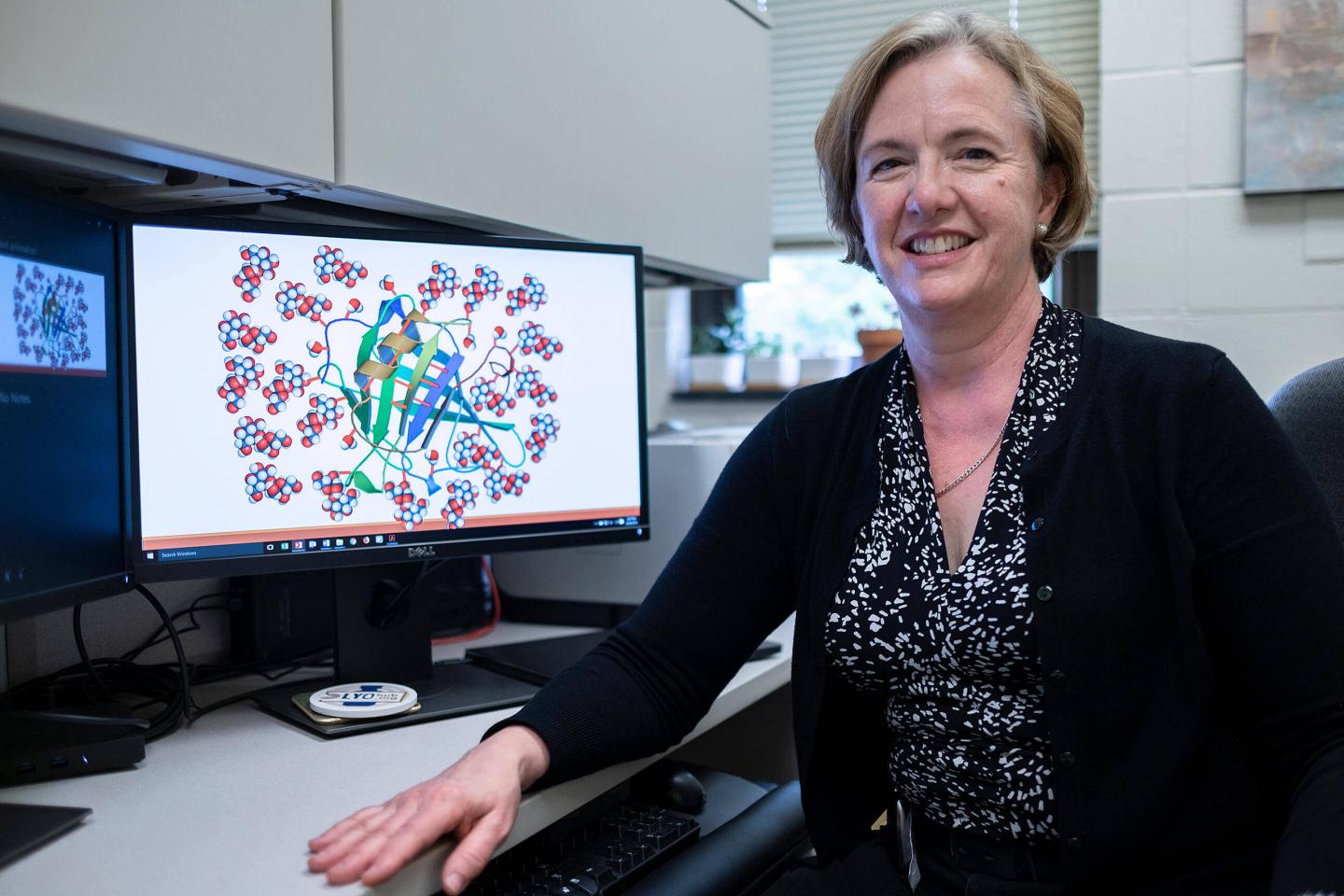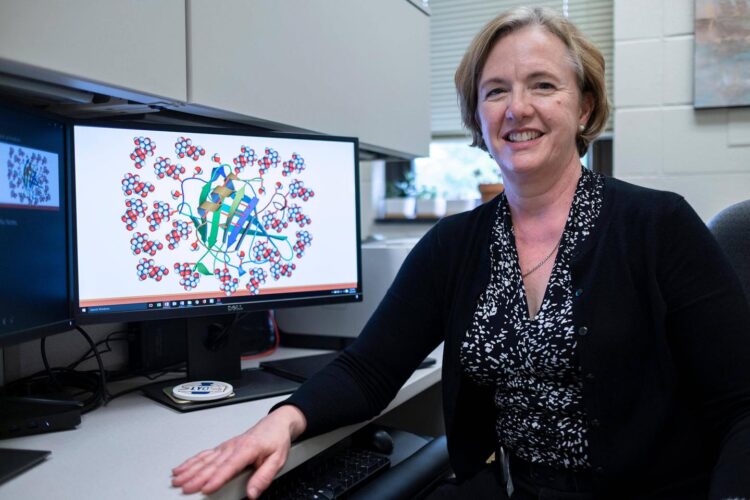
Credit: Chris Adam/Purdue University
WEST LAFAYETTE, Ind. – A novel form of a drug used to treat osteoporosis that comes with the potential for fewer side effects may provide a new option for patients.
The work is supported by the National Institutes of Health and is published in Biophysical Journal.
Purdue University innovators developed a stabilized form of human calcitonin, which is a peptide drug already used for people with osteoporosis. Researchers at Purdue created a prodrug form of the peptide hormone to increase its effectiveness as an osteoporosis treatment.
In humans, calcitonin is the hormone responsible for normal calcium homeostasis. When prescribed to osteoporosis patients, calcitonin inhibits bone resorption, resulting in increased bone mass.
Unfortunately, human calcitonin undergoes fibrillation in aqueous solution, leading to reduced efficacy when used as a therapeutic. As a substitute, osteoporosis patients are prescribed salmon calcitonin. It does not fibrillate as rapidly but suffers from low potency and the potential for several adverse side effects.
“The technology can help make these calcitonin drugs safer and more effective,” said Elizabeth Topp, a Purdue professor of physical and industrial pharmacy. “Our approach will increase the therapeutic potential of human calcitonin, promising a more effective option to replace salmon calcitonin for osteoporosis and related disorders.”
To decrease the fibrillation propensity and increase the therapeutic benefit of human calcitonin, Purdue researchers phosphorylated specific amino acid residues.
“Many promising new peptide drugs tend to form fibrils,” Topp said. “This technology provides a way to stabilize them in a reversible way so that the stabilizing modification comes off when the drug is given to the patient.”
###
The innovators worked with the Purdue Research Foundation Office of Technology Commercialization to patent the technology.
The innovators are looking for partners to continue developing and commercializing their technology. For more information on licensing and other opportunities, contact Joseph Kasper at OTC at [email protected] and mention track code 2019-TOPP-68428.
About Purdue Research Foundation Office of Technology Commercialization
The Purdue Research Foundation Office of Technology Commercialization operates one of the most comprehensive technology transfer programs among leading research universities in the U.S. Services provided by this office support the economic development initiatives of Purdue University and benefit the university’s academic activities through commercializing, licensing and protecting Purdue intellectual property. The office recently moved into the Convergence Center for Innovation and Collaboration in Discovery Park District, adjacent to the Purdue campus. In fiscal year 2020, the office reported 148 deals finalized with 225 technologies signed, 408 disclosures received and 180 issued U.S. patents. The office is managed by the Purdue Research Foundation, which received the 2019 Innovation and Economic Prosperity Universities Award for Place from the Association of Public and Land-grant Universities. In 2020, IPWatchdog Institute ranked Purdue third nationally in startup creation and in the top 20 for patents. The Purdue Research Foundation is a private, nonprofit foundation created to advance the mission of Purdue University. Contact [email protected] for more information.
About Purdue University
Purdue University is a top public research institution developing practical solutions to today’s toughest challenges. Ranked the No. 5 Most Innovative University in the United States by U.S. News & World Report, Purdue delivers world-changing research and out-of-this-world discovery. Committed to hands-on and online, real-world learning, Purdue offers a transformative education to all. Committed to affordability and accessibility, Purdue has frozen tuition and most fees at 2012-13 levels, enabling more students than ever to graduate debt-free. See how Purdue never stops in the persistent pursuit of the next giant leap at purdue.edu.
Writer:
Chris Adam,
[email protected]
Source:
Elizabeth Topp,
[email protected]
Media Contact
Chris Adam
[email protected]
Related Journal Article
http://dx.





